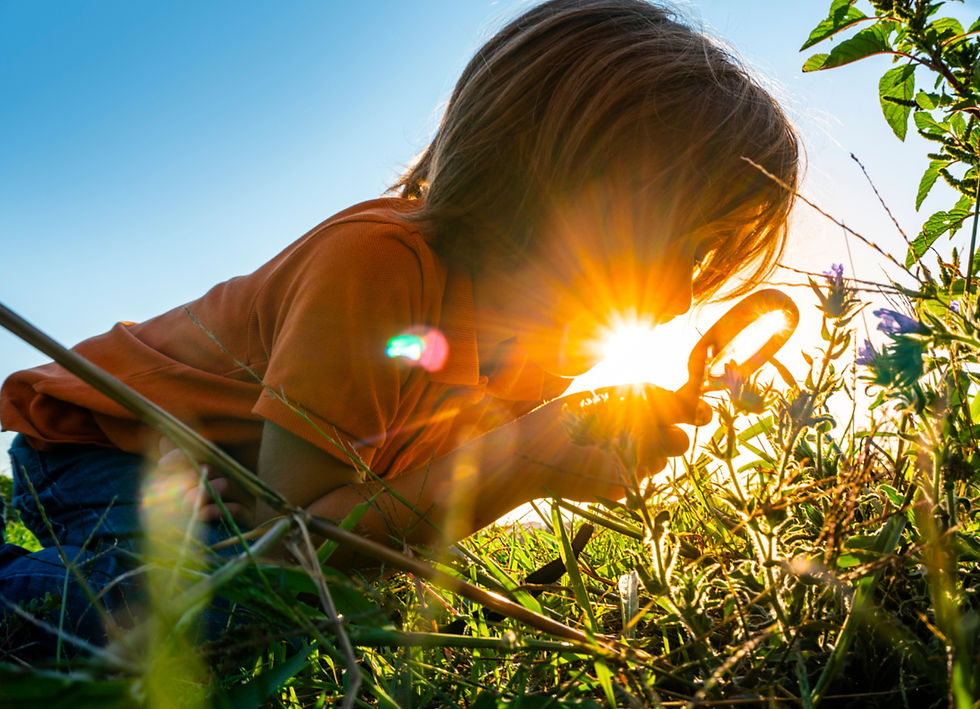Helping Children Stay Grounded: Why Emotional Regulation Matters and How Parents Can Support It
- kristimcdougall
- 4 days ago
- 3 min read

Grounded children are emotionally regulated, calm, and present. Parents can tell their child is not grounded if they are frequently reactive, restless, withdrawn, or have trouble focusing.
Ways to help children ground:
Mindful breathing & body awareness
Movement & play
Spending time in nature
Predictable routines
Modeling calm behavior
Talking openly about feelings
Grounding matters because it builds resilience, reduces stress, and supports learning and healthy relationships.
What Does It Mean for a Child to Be “Grounded”?
When we talk about children being grounded, we don’t mean discipline. We mean emotionally regulated, calm, and present in the moment.
For children ages 5–12, grounding is about being able to manage big emotions, respond instead of react, and recover from stress more quickly. This skill forms the foundation for resilience, learning, and strong social connections.
Signs Your Child May Not Be Grounded
It’s normal for kids to feel upset sometimes. But if these signs happen often, it may mean your child is struggling to stay grounded:
Frequent emotional outbursts or meltdowns
Trouble focusing on tasks or play
Restlessness or hyperactivity (constant movement, fidgeting)
Clinginess or sudden withdrawal
Unexplained headaches, stomachaches, or fatigue
These behaviors often signal that your child’s nervous system is in “fight, flight, or freeze” mode.
Why Being Grounded Matters for Children
Groundedness isn’t just about calm moments — it affects how children learn, grow, and connect with others.
Children who are grounded are more likely to:
Cope with stress: Calm themselves when overwhelmed.
Think clearly: Use problem-solving instead of reacting.
Bounce back faster: Build resilience after setbacks.
Form better relationships: Communicate and connect with others more easily.
📖 Research shows that children who can regulate their emotions are more likely to succeed academically and socially (Murray, Rosanbalm, Christopoulos, & Hamoudi, 2015).
7 Practical Grounding Strategies for Kids
1. Mindful Breathing & Body Awareness
Belly Breathing: Hand on the stomach, slow deep breaths.
Five Finger Breathing: Trace each finger while inhaling up, exhaling down.
Feet on the Floor: Notice where their feet press into the ground.
2. Movement as a Reset
Physical activity helps release built-up energy. Try:
Jumping, running, dancing
Simple yoga poses (child’s pose, downward dog)
Stretching breaks during homework
3. Nature Connection
Short walks outside
Gardening or watering plants
Listening for bird sounds. Nature naturally lowers stress and brings children into the present moment.
4. Sensory Grounding Techniques
5-4-3-2-1 Game: 5 things to see, 4 to feel, 3 to hear, 2 to smell, 1 to taste
Calming Kits: Stress balls, soft blankets, fidget toys
5. Routine and Predictability
Consistent meal and bedtimes
Clear expectations for homework and chores
Evening rituals that promote calm (storytime, dim lights, soft music)
6. Modeling Calm Regulation
Children learn what they see. If parents pause, breathe, and stay present during stress, kids learn to do the same.
7. Talking About Feelings
Encourage open conversations:
“I see your fists are clenched — are you frustrated?”
“It looks like you need a break. Want to sit and breathe together?”
Naming emotions helps kids understand that feelings are temporary and manageable.
A Balanced Approach
No child can stay grounded all the time — and that’s okay. Emotional ups and downs are part of growing up. What matters is helping children return to balance after difficult moments.
With a mix of mindful practices and practical routines, parents can give children the tools to build calm, resilience, and emotional strength that lasts a lifetime.
Reference
Murray, D. W., Rosanbalm, K., Christopoulos, C., & Hamoudi, A. (2015). Self-regulation and toxic stress: A review of ecological, biological, and developmental studies of self-regulation and stress. OPRE Report #2015-30. Office of Planning, Research and Evaluation, Administration for Children and Families, U.S. Department of Health and Human Services.


Comments